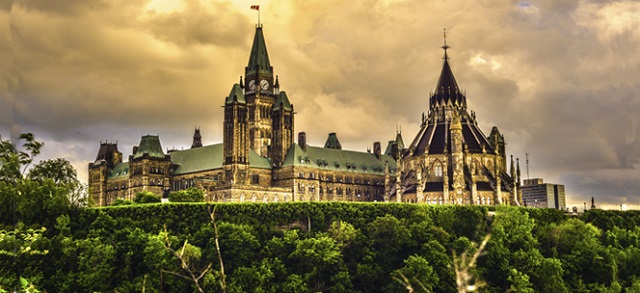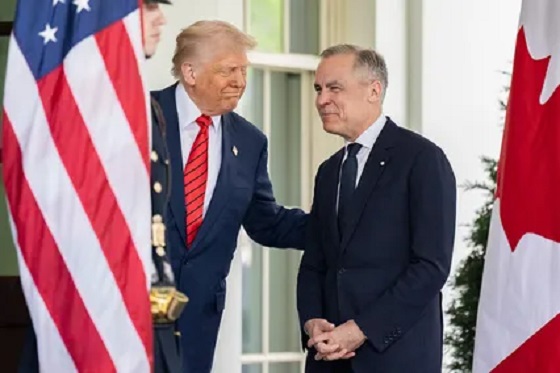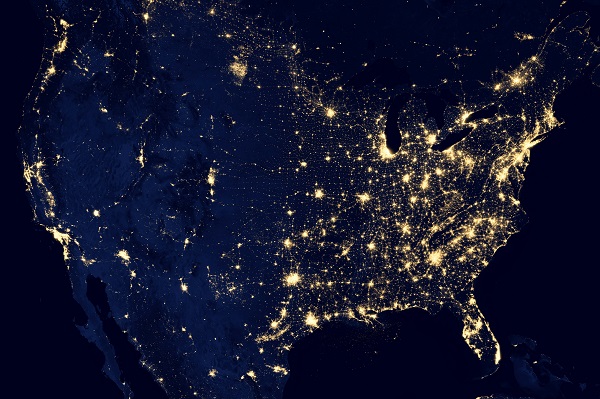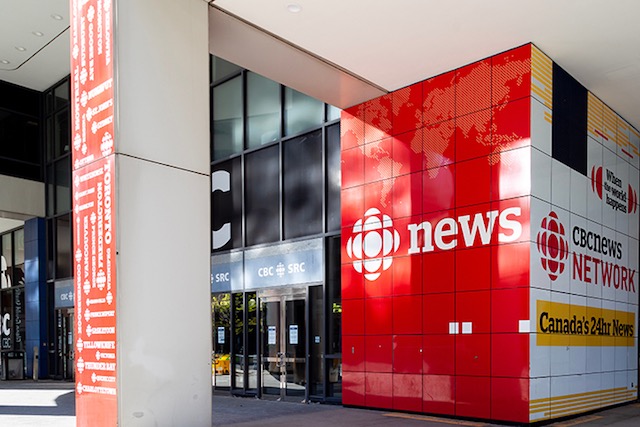Economy
Trudeau balloons bureaucracy by 42 per cent, adds 108,000 employees

From the Canadian Taxpayers Federation
Author: Franco Terrazzano
The Trudeau government’s addiction to hiring bureaucrats continues unabated.
The government added another 10,525 bureaucrats to its payroll last year, bringing the size of the federal bureaucracy up to 367,772, according to data from the Treasury Board of Canada Secretariat released July 11.
“Was there a bureaucrat shortage in Ottawa before Trudeau took over?” said Franco Terrazzano, Federal Director of the Canadian Taxpayers Federation. “Canadians need a more efficient government, not a bloated government full of highly paid bureaucrats.”
Since Prime Minister Justin Trudeau came to power in 2015, the feds have added 108,793 new bureaucrats to the government dole – an increase of 42 per cent.
Canada’s population grew by just 14 per cent during the same time period. Had the bureaucracy only increased with population growth, there would be 72,491 fewer federal employees today.
Table: Size of federal bureaucracy, per TBS data
|
Year (As of March 31) |
Number of federal bureaucrats |
|
2016 |
258,979 |
|
2017 |
262,696 |
|
2018 |
273,571 |
|
2019 |
287,983 |
|
2020 |
300,450 |
|
2021 |
319,601 |
|
2022 |
335,957 |
|
2023 |
357,247 |
|
2024 |
367,772 |
It isn’t just the size of the federal bureaucracy that’s ballooning – the cost is too.
The cost of the federal payroll hit $67.4 billion in 2023, a record high, according to a report from the Parliamentary Budget Officer, Ottawa’s independent, non-partisan budget watchdog.
That’s a 68 per cent increase over 2016, when the federal payroll sat at 40.2 billion.
The Trudeau government also handed out more than one million pay raises to bureaucrats over the past four years alone, according to government records obtained by the CTF.
The government has consistently declined to reveal how much those raises cost taxpayers.
The federal government also rubberstamped more than $1.5 billion in bonuses for bureaucrats since 2015.
Meanwhile, despite the bureaucratic hiring spree, spending on consultants has also skyrocketed under the Trudeau government. Consultant spending now sits at $21.6 billion annually.
Given the rash of bonuses and pay raises, on top of spate of new hires, Canadians might wonder: how well are things running in Ottawa?
Well, the reviews are in and the results aren’t good.
Less than 50 per cent of the government’s own performance targets are consistently met by federal departments within each year, according to a March 2023 report from the PBO.
“We’ve seen an increase in the number of public servants and in public expenditures, but year after year, despite the fact that departments choose their performance indicators and the targets, they don’t seem to be getting significantly better at reaching them,” Budget Officer Yves Giroux testified to a parliamentary committee in March 2024.
The average annual compensation for full-time federal bureaucrats is $125,300, when pay, pension, and other perks are accounted for, according to the PBO.
Meanwhile, data from Statistics Canada suggests the average annual salary among all full-time workers in Canada was less than $70,000 in 2023.
“The feds have hired tens of thousands of extra bureaucrats, handed out more than one million raises and rubber stamped hundreds of million in bonuses in recent years and still can’t deliver good services,” Terrazzano said. “Any government that cares about balancing the budget must take air out of the ballooning bureaucracy.”
Business
Most Canadians say retaliatory tariffs on American goods contribute to raising the price of essential goods at home

- 77 per cent say Canada’s tariffs on U.S. products increase the price of consumer goods
- 72 per cent say that their current tax bill hurts their standard of living
A new MEI-Ipsos poll published this morning reveals a clear disconnect between Ottawa’s high-tax, high-spending approach and Canadians’ level of satisfaction.
“Canadians are not on board with Ottawa’s fiscal path,” says Samantha Dagres, communications manager at the MEI. “From housing to trade policy, Canadians feel they’re being squeezed by a government that is increasingly an impediment to their standard of living.”
More than half of Canadians (54 per cent) say Ottawa is spending too much, while only six per cent think it is spending too little.
A majority (54 per cent) also do not believe federal dollars are being effectively allocated to address Canada’s most important issues, and a similar proportion (55 per cent) are dissatisfied with the transparency and accountability in the government’s spending practices.
As for their own tax bills, Canadians are equally skeptical. Two-thirds (67 per cent) say they pay too much income tax, and about half say they do not receive good value in return.
Provincial governments fared even worse. A majority of Canadians say they receive poor value for the taxes they pay provincially. In Quebec, nearly two-thirds (64 per cent) of respondents say they are not getting their money’s worth from the provincial government.
Not coincidentally, Quebecers face the highest marginal tax rates in North America.
On the question of Canada’s response to the U.S. trade dispute, nearly eight in 10 Canadians (77 per cent) agree that Ottawa’s retaliatory tariffs on American products are driving up the cost of everyday goods.
“Canadians understand that tariffs are just another form of taxation, and that they are the ones footing the bill for any political posturing,” adds Ms. Dagres. “Ottawa should favour unilateral tariff reduction and increased trade with other nations, as opposed to retaliatory tariffs that heap more costs onto Canadian consumers and businesses.”
On the issue of housing, 74 per cent of respondents believe that taxes on new construction contribute directly to unaffordability.
All of this dissatisfaction culminates in 72 per cent of Canadians saying their overall tax burden is reducing their standard of living.
“Taxpayers are not just ATMs for government – and if they are going to pay such exorbitant taxes, you’d think the least they could expect is good service in return,” says Ms. Dagres. “Canadians are increasingly distrustful of a government that believes every problem can be solved with higher taxes.”
A sample of 1,020 Canadians 18 years of age and older was polled between June 17 and 23, 2025. The results are accurate to within ± 3.8 percentage points, 19 times out of 20.
The results of the MEI-Ipsos poll are available here.
* * *
The MEI is an independent public policy think tank with offices in Montreal, Ottawa, and Calgary. Through its publications, media appearances, and advisory services to policymakers, the MEI stimulates public policy debate and reforms based on sound economics and entrepreneurship.
Business
Trump confirms 35% tariff on Canada, warns more could come

Quick Hit:
President Trump on Thursday confirmed a sweeping new 35% tariff on Canadian imports starting August 1, citing Canada’s failure to curb fentanyl trafficking and retaliatory trade actions.
Key Details:
- In a letter to Canadian Prime Minister Mark Carney, Trump said the new 35% levy is in response to Canada’s “financial retaliation” and its inability to stop fentanyl from reaching the U.S.
- Trump emphasized that Canadian businesses that relocate manufacturing to the U.S. will be exempt and promised expedited approvals for such moves.
- The administration has already notified 23 countries of impending tariffs following the expiration of a 90-day negotiation window under Trump’s “Liberation Day” trade policy.
Diving Deeper:
President Trump escalated his tariff strategy on Thursday, formally announcing a 35% duty on all Canadian imports effective August 1. The move follows what Trump described as a breakdown in trade cooperation and a failure by Canada to address its role in the U.S. fentanyl crisis.
“It is a Great Honor for me to send you this letter in that it demonstrates the strength and commitment of our Trading Relationship,” Trump wrote to Prime Minister Mark Carney. He added that the tariff response comes after Canada “financially retaliated” against the U.S. rather than working to resolve the flow of fentanyl across the northern border.
Trump’s letter made clear the tariff will apply broadly, separate from any existing sector-specific levies, and included a warning that “goods transshipped to evade this higher Tariff will be subject to that higher Tariff.” The president also hinted that further retaliation from Canada could push rates even higher.
However, Trump left the door open for possible revisions. “If Canada works with me to stop the flow of Fentanyl, we will, perhaps, consider an adjustment to this letter,” he said, adding that tariffs “may be modified, upward or downward, depending on our relationship.”
Canadian companies that move operations to the U.S. would be exempt, Trump said, noting his administration “will do everything possible to get approvals quickly, professionally, and routinely — In other words, in a matter of weeks.”
The U.S. traded over $762 billion in goods with Canada in 2024, with a trade deficit of $63.3 billion, a figure Trump called a “major threat” to both the economy and national security.
Speaking with NBC News on Thursday, Trump suggested even broader tariff hikes are coming, floating the idea of a 15% or 20% blanket rate on all imports. “We’re just going to say all of the remaining countries are going to pay,” he told Meet the Press moderator Kristen Welker, adding that “the tariffs have been very well-received” and noting that the stock market had hit new highs that day.
The Canadian announcement is part of a broader global tariff rollout. In recent days, Trump has notified at least 23 countries of new levies and revealed a separate 50% tariff on copper imports.
“Not everybody has to get a letter,” Trump said when asked if other leaders would be formally notified. “You know that. We’re just setting our tariffs.”
-

 COVID-1921 hours ago
COVID-1921 hours agoFDA requires new warning on mRNA COVID shots due to heart damage in young men
-

 Business19 hours ago
Business19 hours agoCarney’s new agenda faces old Canadian problems
-

 Daily Caller16 hours ago
Daily Caller16 hours agoBlackouts Coming If America Continues With Biden-Era Green Frenzy, Trump Admin Warns
-

 Indigenous20 hours ago
Indigenous20 hours agoInternal emails show Canadian gov’t doubted ‘mass graves’ narrative but went along with it
-

 Bruce Dowbiggin22 hours ago
Bruce Dowbiggin22 hours agoEau Canada! Join Us In An Inclusive New National Anthem
-

 Business2 days ago
Business2 days agoCBC six-figure salaries soar
-

 Addictions2 days ago
Addictions2 days agoCan addiction be predicted—and prevented?
-

 Addictions2 days ago
Addictions2 days agoMore young men want to restrict pornography: survey



